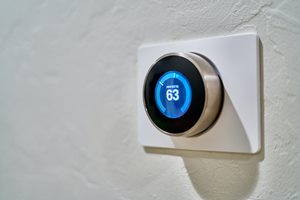Seamless mobile coverage is integral to the effectiveness of the Internet of Things (IoT) when integrated with energy management systems, as Stuart Waine of Spry Fox Networks explains.
Over the last few years wholesale gas prices have increased by a factor of 14, and electricity prices by a factor of 8. Increasing demand, limited supplies, a shortage of storage space and the conflict in Ukraine mean energy prices are still skyrocketing and bills are causing real angst for households and businesses alike. Moreover, Centrica (owners of British Gas) has warned that energy price volatility in the UK is likely to continue for the foreseeable future and there is serious concern that many commercial organisations will soon be reaching the end of their existing fixed price contracts. Some have already seen their energy costs rise by more than 100%. With energy inflation set to continue, never has there been a more compelling need for business owners to better understand their energy usage simply to retain the bottom line.
Amidst the energy gloom, however, IoT innovations and 5G rollouts are offering a glimmer of hope. By fortuitous timing, both are coming of age and could be the solace businesses need going forwards, especially when deployed alongside energy management and/or HVAC systems.Apart from enabling businesses to automate historically manual processes, strategically placed IoT sensors can be configured to proactively monitor energy usageand performance, thus making sure HVAC systems are working as they should to minimize waste which in turn reduces cost. Not only that, the data captured over time can be used to identify usage patterns and trends that can be dynamically counteracted, resulting in slicker operations, and significant cuts to utility bills.
Some industries have been slow to embrace IoT
But IoT is not a new technology. The concept has been around for ten plus years running on existing comms networks with interconnected devices and applications prevalent in industry and consumables. It’s true worth, however, is only just coming to fruition due to 5G networks going mainstream and innovations in AI and automation. That said, until recently there has been a reluctance by many organisations, public sector ones in particular, to harness the benefits of embedded sensors because of the perceived upheaval, disruption to service during their install, costs involved etc versus the perceived gains. Mobile connectivity has also traditionally taken second place over Wi-Fi.
Now that the New Building Safety Act has come into force, proprietors of any mixed-use property, regardless of sector, must nominate someone to be responsible for harnessing data for due diligence. With these new safety new rules to abide by, together with uncontrolled bill rises and drives towards digital transformation in all sectors, businesses adopting a “head in the sand” approach to the merits of IoT and connectivity do so at their own peril.
Seamless mobile coverage is the underpinning enabler to smart technologies
A common misconception of installing smart building technologies is the need for Wi-Fi. Whilst it is indeed a key component of digital transformation, the underpinning enabler to embedded tech is cellular as it is the trigger mechanism for device2device communication. Businesses therefore need to address their inbuilding coverage situation if their investment is to deliver rapid Roi. Providing the levels of converge needed can be challenging, however, because a mobile signal is weakened by default as soon as it is taken indoors. Additionally, materials such as reinforced concrete, galvanized steel, tinted glass iron girders, insulation foam etc hinder the transmission of mobile phone signals, particularly 5G ones due to their short ranges, yet this is network fuelling the IoT phenomena.
The type of coverage system needed is depicted by organisation type and size

Larger organisations have historically overcome their coverage challenges by implementing operator-connected DAS. But smaller businesses are also impacted by rising energy bills, indeed more so, need a compelling alternative. A viable solution is to replace power hungry DAS with lower power more efficient repeater-based solutions. Before deciding on the best option, businesses must firstly assess the outdoor coverage situation as this will determine the type/number of repeaters needed and their configuration requirements. Factors to be considered include the proximity of mobile phone tower, the MNOs themselves, the number of devices needing to be simultaneously connected, as well as the total number of network users. This information can be obtained by conducting a mobile site survey but most of the readily available tools do not provide the hierarchical view needed as they only take the network coverage situation into account. Mobile coverage as device level must also be considered if the performance and operability of HVAC systems are to be optimised.
Wi-Fi connectivity and uninterrupted mobile coverage must be given equal standing
Even after a site survey business can ill afford to commission a mobile coverage system with long lead times. They need a turnkey solution that can be up and running in a few days because they need to get a handle on energy consumption now. Building owners must also stop favouring W-Fi and fibre broadband over reliable mobile coverage, because if they don’t their energy management investments will futile due to self-created mobile dead spots.
The author is Stuart Waine of Spry Fox Networks.
Comment on this article below or via Twitter: @IoTNow_OR @jcIoTnow










